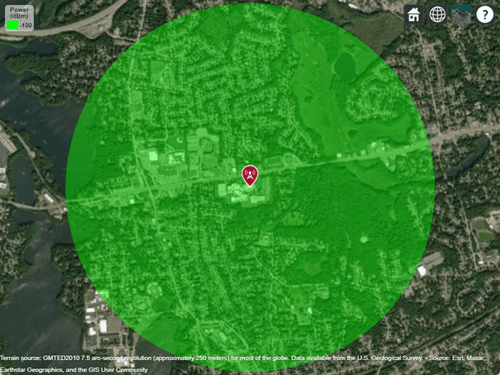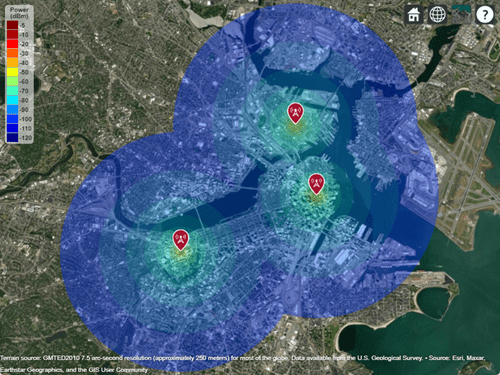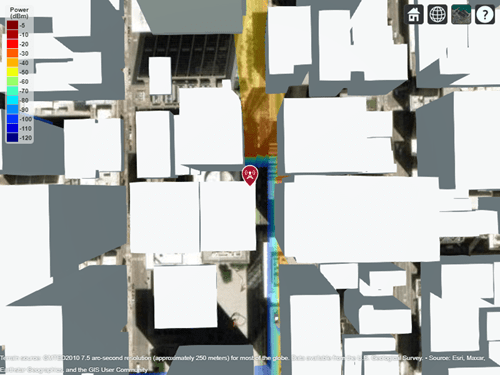coverage
カバレッジ マップの表示または計算
構文
説明
coverage( は、指定された送信機サイトのカバレッジ マップを現在のサイト ビューアーで表示します。マップに表示される色付きの各領域は、対応する強度の信号が移動体受信機に送信されるエリアを表します。txs)
この関数は、CoordinateSystem プロパティが "geographic" に設定されているアンテナのみをサポートします。
coverage( は、指定された受信機サイトの情報を使用してカバレッジ マップを表示します。この関数は、受信機サイトを使用して受信機のゲインと受信機のアンテナ高さを計算しますが、受信機サイトの緯度と経度は使用しません。受信機のゲインと受信機のアンテナ高さの詳細については、名前と値の引数 txs,rx)ReceiverGain および ReceiverAntennaHeight を参照してください。
coverage(___, は、名前と値の引数によって指定された追加オプションを使用してカバレッジ マップを表示します。Name=Value)
例
入力引数
名前と値の引数
出力引数
制限
RayTracing オブジェクトを関数 coverage への入力として指定する場合、MaxNumDiffractions プロパティの値は 0 または 1 でなければなりません。
参照
[1] International Telecommunications Union Radiocommunication Sector. Effects of Building Materials and Structures on Radiowave Propagation Above About 100MHz. Recommendation P.2040. ITU-R, approved August 23, 2023. https://www.itu.int/rec/R-REC-P.2040/en.
[2] International Telecommunications Union Radiocommunication Sector. Electrical Characteristics of the Surface of the Earth. Recommendation P.527. ITU-R, approved September 27, 2021. https://www.itu.int/rec/R-REC-P.527/en.
[3] Mohr, Peter J., Eite Tiesinga, David B. Newell, and Barry N. Taylor. “Codata Internationally Recommended 2022 Values of the Fundamental Physical Constants.” NIST, May 8, 2024. https://www.nist.gov/publications/codata-internationally-recommended-2022-values-fundamental-physical-constants.
拡張機能
バージョン履歴
R2019b で導入1 Alignment of boundaries and region labels are a presentation of the feature provided by the data vendors and do not imply endorsement by MathWorks®.















